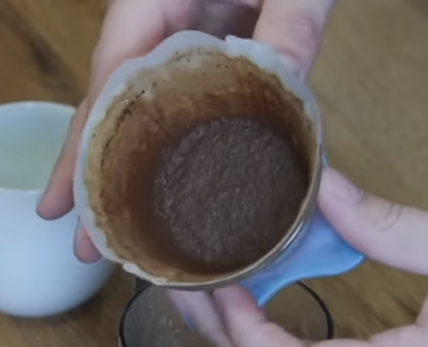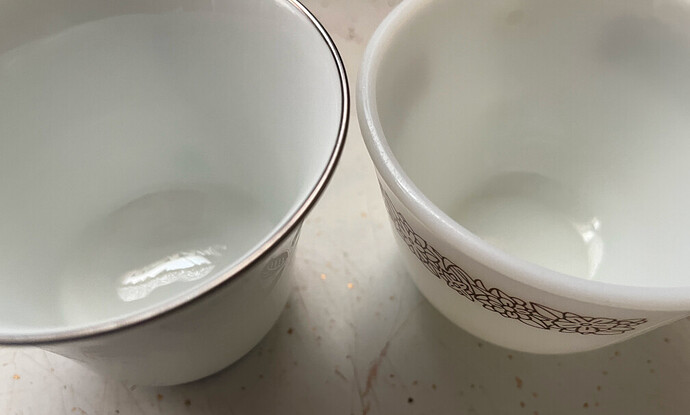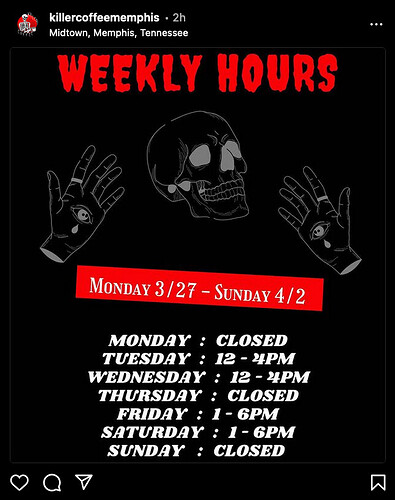Yeah idk. There are aspects about him that I don’t like but he seems like a knowledgeable and genuine dude and I can’t think of any reason to direct that kind of hate his way.
I wonder if it’s mostly just the Spotify-ication of content problem of one billion plays being worth $1.29 to the actual creator. The thing that’s obvious to me is that the best play by far is to completely sell out for as much money as possible as quickly as possible. People are going to roast you if you sell out, but people are going to roast you if you don’t sell out because all of these platforms are set up for the loudest and most vile trolls to excel.
There’s another genre of video I watch (guitar gear / audio equipment reviews) which would make the coffee critics look like Mother Theresas. There are plenty of those guys who just do obviously paid gear “reviews” where every new $399 trinket is a “must have for your home studio or pedal board.”  Some of them have talked about the insane amount of offers they get to place products on channel. But then there are people who just make really good general interest videos, and even those guys get shit on constantly by cantankerous forum trolls for simply having a Youtube channel at all, so it’s a no-win situation.
Some of them have talked about the insane amount of offers they get to place products on channel. But then there are people who just make really good general interest videos, and even those guys get shit on constantly by cantankerous forum trolls for simply having a Youtube channel at all, so it’s a no-win situation.
I’m low on backup so I ordered everything Happy Mug currently had in stock. This Ethiopia has interesting flavors, was easy to extract, and didn’t require more than a few days rest to be drinkable.
https://happymugcoffee.com/collections/roasted-coffee/products/ethiopia-yirgacheffe-adiso-kidane-1
Tasting Notes: cotton candy, blueberry poptart, floral, bright, clean aftertaste
If you’ve ever had cotton candy grapes, it has that sort of vibe. I wouldn’t call it amazing but it’s solid. I’m not getting any blueberry poptart and it doesn’t seem to be overly bright or clean which leads me to believe I should be grinding a bit coarser.
I don’t recommend the Rwanda “medium” they have right now which came out too roasty except for maybe espresso (or if you prefer darker roasts). The other LRSOs should be fine but I haven’t tried them yet.
I got the Rwanda this weekend for my partner. We usually drink the dark roast Guatemala when she’s here but we wanted to change things up. I don’t know if I’m doing things wrong or if I just don’t have good coffee taste but a lot of these taste indistinguishable to me. I think I could just barely tell the difference between the Guatemala and Rwanda. They both seem fine and inoffensive. I can sometimes get just a touch of maybe one of the tasting notes but it all just overwhelmingly tastes like coffee.
I also got the lemonade stand for myself after finishing my Yemen bag, should be a huge difference there but again I can’t tell. They both clearly taste light but beyond that ??? I thought I was getting the grain taste from the Yemen but I’m getting the same taste from the lemonade. Maybe I should have let it rest longer?
For tasting light coffees, the main thing is characterizing the acidity. I believe it’s easier to just think in terms of fruit juice. The dark end of the acidity spectrum would be something like banana or blueberry and bright end would be lemon or lime juice. Occasionally you’ll find an LRSO that’s even less acidic with a non-fruit tomato-like acidity or whatever but those are rarer (and also some of my favorites).
My goal is generally to hit something in the middle of that scale or on the darker end with sweetness and to avoid tart lemon / lime acidity that lacks sweetness. If you get into that latter category, the coffee may be underextracted, although sometimes it’s the water chemistry or the coffee itself which is what makes the diagnostic part difficult. But to be clear, the entire game with LRSO is to get the acids to render properly. If you don’t do that, then none of the other stuff matters and you aren’t going to taste the correct flavors.
Yeah I must not be doing that. I was looking forward to going full lemon. The first coffee I tried after getting into this thread (Harrar light roast) tasted like there was a pack of sweet tarts dissolved into my coffee and I loved it.
You may just be underextracting if you aren’t getting the flavors. Recall that the acids are the easiest thing to extract and they come out first, then you get the sugars and oils, and finally the phenolic compounds that taste like grass. You need to get as much of stage 2 as possible to really get the ideal flavor profile without going into stage 3 too much, and that’s what makes this really challenging. Some coffees are just nicer about giving those sugars and oils up than others.
I’ve ground all the way down to 4M or 4A on some coffees, so just keep going finer if you aren’t getting interesting flavors. If that still doesn’t do the trick, then I’d check the water and maybe think about resting more. A rest test you can do is grind your dose several hours prior to brewing (or the night before) because this accelerates the off-gassing expontentially.
What type of cupware are you using?
If it’s just me I’m using a ceramic v60 into a 20 oz yeti tumbler and taking it to work, if my partner is here it’s a moccamaster carafe into basic ceramic mugs.
I recommend getting an extremely thin and flared porcelain / china tea cup for home tasting. Even the vintage Pyrex coffee cups I bought are two or three times thicker at the lip which takes some of the articulation away. That’s why I keep going back to this one on the left, although the Pyrex isn’t a terrible choice:
The reason for porcelain / china is that the walls can be made much thinner than ceramic, and that thinness with the flaring really allows the coffee to spread out across your palate. It’s also shaped to enhance aroma, whereas I find most coffee cupware does not work adequately for that. The vast majority of filter coffee cupware is designed to maintain temperature of low-quality coffee with no expectation that it will be properly tasted like tea, wine, or brandy. Huge difference between pouring a few ounces at a time and sipping from this compared to filling up a ceramic mug.
The specific cup I’m using is a Noritake 6909 (Japan). There’s nothing particularly special about it other than having the thinnest flared rim of any cupware I own. There must be hundreds or thousands of similar options out there at flea markets, antique stores, and such for not a lot of money. There’s also glassware we’ve discussed in here before that probably works too.
I’m getting that strange bag break effect where the first few days were consistently amazing but now I’m chasing again. I have no logical explanation for this since it’s coming out less extracted at the same grind setting. Of course it could just be bias from hitting a few consecutive perfect-perfect brews off the top. I dunno.
how do people think they’re going to be able to sustain a business like this
Are you concerned if you get a muddy bed doing this? I’ve tried again in the 6-7 range and I’m for sure getting more flavors but the bed is beyond mud.
I think it just depends on the coffee and how difficult it is to extract. The concern with mud is clogging the filter, but I’ve had some coffees recently that ran for 8 minutes and were fine, so just keep going finer until it gets bitter.
I mentioned earlier that I got a 3d printer in part to try and clone the orea v3. Well of course the damn thing became available for purchase shortly thereafter.
Maybe a dozen cups from it now and I’ll say that the hype is real. I’ve run two recipes that it shipped with and all but one cup has been exceptional. The bad cup? My first one with the brewer where I had used too fine a grind.


Why do you think it’s performing so well? I just finished watching Lance’s video and agree about the ridged Kalita-style paper being bad. He said he’s using “lab grade filters” in the Orea and then form fitting with the Negotiator. I’ve priced those before and generally they’re crazy expensive, but Chemex unfolded circles are basically the same thing at a much lower cost. I’m wondering if I can get similar results if I just drill this Kalita out even wider and then 3D print a Negotiator to fit the paper.
@d10 Here is Lance’s Orea bed from the video. Lot of mud which should be expected grinding medium-fine range, especially if you have a dense coffee that shatters like an Ethiopian. He says even with agitation it wasn’t at risk of clogging due to the Orea having a large opening.

I’m not sure why it’s performing so well. It seems like maybe they’ve found a sweet spot with good temperature stability, shape, size, and flow rate. I’ve gotten good results and consistency with my stagg xf and April brewers but these orea brews have been more vibrant and closer to v60. The results so far aren’t quite as good as the best v60 cups I’ve brewed but I’d say they’re in the top 20% at least.
I’ve been using the wave filters and mashing them into the walls with the negotiator. It probably doesn’t cut out bypass completely but I think it cuts it down at least. I do intend to pick up some non-pleated filters to give that a try though.
I keep seeing people on Reddit praising that cinnamon process coffee from black and white. I just don’t get it. Maybe they’ve gotten better with the roast on it but I remember it tasting kind of ashy with a hint of cinnamon and a shitload if cinnamon smell.
Yeah I don’t trust reddit for anything coffee related. I’m remembering that one more as a generic malic cup with a hint of cinnamon, but the aroma was definitely bold. I view those infusion processes more as novelties and prefer traditional washed and naturals.
@d10 Important thing about mud I forgot to say is that it’s mainly a sign when you’re grinding medium-coarse or higher since then it tends to indicate the alignment is off. Like if you’re getting mud grinding at 8M+ across all coffees then it’s probably time to check alignment, but at 5M you should expect to get something like Lance is showing above. 6M - 7M medium range is trickier since some coffees like dense Africans can produce a lot of fines but others may not.

